
Originally published on www.kauaifarmacy.com
Doug Wolkon, owner of Kauai Farmacy shares his personal healing journey drinking fresh Kauai-grown herbal tea
Ten years ago my wife Genna and I moved into a rental house in Kilauea, Kauai with our three-year old son. He was running circles around me during the day; and at night, I would fall asleep to his bedtime story. As a competitive high school athlete, I never imagined losing my youthful movements by age 35. I’d spent the last 15 years hecticly traversing the country while working nonstop hours on the phone and computer. Nightly I would “unwind” to steak and wine dinners. The compounded effects were beginning to show. My neck and waist were both inflamed and numb. I desperately needed an interceptor.
At the time, if you were to open up my supplement closet, bottles of powders, tinctures and capsules, would probably come falling out, for I was a supplement connoisseur. And I would try anything; including a $300, 2-ounce “rare” ginseng tincture.
The evening we moved into that rental was quite memorable. The landlord, Carol, gave me an epic tour of her quaint medicinal herb garden by pointing out the names, a short history of the plants, and usage of each particular herb. The diverse, yet humble 10 x 20-foot garden consisted of approximately 12-15 different plants including: rosemary, sage, valerian, holy basil, nettles, thyme, lemon balm, and mint.
After the garden tour I asked Carol how she used these herbs. She quickly responded that she really didn’t have much time for using the herbs in her lifestyle at the moment, but if she were to use them, she would brew them in a tea or use them for culinary purposes. I immediately thought to myself, “Great, I was already familiar with making fresh herbal tea from the Noni Leaf, a Polynesian superherb that we began brewing since moving to Kauai years before, so this will integrate perfectly into my existing tea practice.”
That very same evening, I enthusiastically began researching the properties of the individual herbs I had just met in our new garden. I remember staying up all hours of the night researching Tulsi or Holy Basil. I could not believe that the revered adaptogenic herb, Tulsi, otherwise known as “The Elixir of Life”, was growing in our very own garden; and alongside so many other powerhouse tonic herbs used for cleansing, circulation, clarity, calming, inflammation, detoxing, restoration and so much more. I remember my excitement-like a kid in a candy store.
So, the very next morning when I awoke, I grabbed some scissors and a basket; and made my first batch of home-brewed fresh herbal tea, consisting of Tulsi, Mint, Lemon Balm, and Sage. I remember taking 5-20 leaves off each plant, basing my harvest amounts on what each plant had to offer; and somehow fully trusting in my intuition in crafting my very own medicinal brew. I brewed the tea in a pot and steeped it in a half gallon jug that I proceeded to drink throughout the next day or two.
The tea was delicious, extremely medicinal, and alive. I could immediately feel the authentic, alkalizing effects of intentionally grown, harvested and crafted herbal medicine. Over the next few weeks, as I continued to craft and drink more and more tea, I noticed a profound shift in my diet, attitude and circulation levels.
It was honestly a bit confusing to suddenly have stumbled upon this new vital energy for my body, mind and spirit; yet it was a practice that had been revered by billions of people for thousands of years. I couldn’t help but think to myself, “But where does one get a variety of truly fresh medicinal herbs?” In fact, where in the world could I even find a fresh cup of herbal tea grown, crafted and brewed with intention to heal? I remember reading all about the medicinal powers of herbal tea throughout history. But where in the world does one get truly fresh herbs?
I remembered my general aversion to and lack of trust in the powers of natural or herbal medicine during my childhood. I soon realized that the difference was, those herbs and spices were old, stale, fertilized with chemicals, and processed at super high temperatures that collectively rid the herbs of their intention to heal. It became clear to me why herbal tea was not being appreciated in the West for its medicinal nature, and how it had unfortunately vanished from our cultural practices for so many generations.
And slowly but surely, as I drank the tea, I began to develop a true relationship with these notorious healing plants. The self-awareness that the fresh Tulsi is revered for started to trickle into my consciousness; the profound flavor and cooling effects of fresh mint began to bring more smiles to my face; the gentle nature of fresh Lemon Balm helped calm my nervous system; and the restorative nature of fresh Sage, “The Queen of Herbs”, sparked a new sense of well-being and vitality.
Over the next 6 months, I proceeded to drink a half to full gallon of herbal tea every day. I would actually leave the fresh herbs in the jar to make sure I got all the medicine. How could I not? My body began to move. My numb hips began doing the hula, and my stiff neck started to trim out and regain its swivel motion (that I didn’t even realize I had lost).
I now understood that for years I had been unconsciously eating as a habitual and cultural practice only, instead of seeking true conscious alkaline nourishment. The acidic foods like meat, dairy, gluten and highly processed and synthetic sugars instantly became less attractive, and my mind and body began to crave more fruits, veggies, nuts and seeds. I could feel my blood becoming cleaner and more alkaline; I was actually eating larger portions of food, while shedding acidic toxic weight at the same time (I lost about 30 pounds!)
I was sold! So much so that I began to empty my supplement closet; a closet filled with bottles and jars that I had no idea how and where they were grown, how old they were, or how they were crafted. It was quite the eye opener.
As my body, mind and spirit were coming alive; I felt less fascinated by the nutritional value of the supplements, in terms of specific vitamins and minerals; because I was undoubtedly experiencing a higher level of healing. A level of healing that reconnected me to my intuition, willpower and self-awareness. The detoxing effects of the fresh herbal tea were clawing and scratching at acidic blockages in the body that had been accumulated over a lifetime of poor eating and drinking. Years of childhood sodas, candy, white bread, and animal products began to gently cleanse from the body with consistent trips to the bathroom; resulting in increased circulation that activated various tools in my body that otherwise laid dormant throughout my lifetime. The self-empowering nature of these fresh herbs were undeniable. My wife and I both felt it. We were excited to share our experience and this information with the world.
In 2011, Genna and I had the opportunity to steward a horse ranch on the north shore of Kauai in the town of Kilauea with 15 fruit trees, including Noni, and a patch of lemongrass. We started planting with a single Tulsi plant from a cutting taken from our previous rental house; and the grand vision of creating a biodynamic herbal medicinal tea farm had officially begun. In the past 8 years, we have collected over 70 different types of genetics to round out our diverse herbal medicine cabinet. We have used the plants to provide our family, friends and customers with the finest and freshest Kauai grown herbal medicine has to offer; often cured, crafted, packaged, and sold within the week of harvest. Our herbs are grown in our organic gardens by humble and loving farmers, crafted with the ultimate of intention to heal by our artisanal herbalists, and sold to you directly from our farm – as FRESH & PURE as possible!
So here I am 10 years later. Still drinking fresh herbal tea like my life depends on it; because I believe it does. I hope and pray that more of you grow your own medicine gardens, or seek out fresh mint, sage and lemon balm from your neighbor or local farmer to brew a fresh batch of herbal tea. Drinking fresh herbal tea has changed my life. I feel so strongly about the powers of these plants to heal the people and the planet, that I live every day to help make it a cultural phenomenon!
As a GreenMedInfo subscriber, they’re offering 15% OFF your order. Simply enter in the coupon code GreenMed2022 to take advantage of this special offer while limited supplies last!
For more on the wonderful health benefits of tea, visit the GreenMedInfo database.



.jpg)





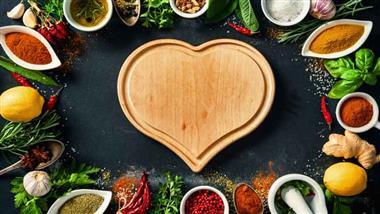
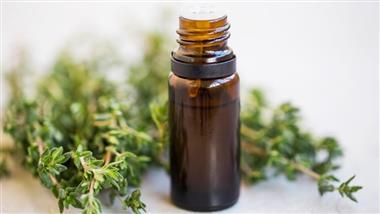

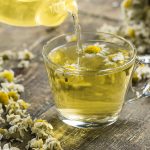 (
(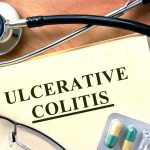 (
(

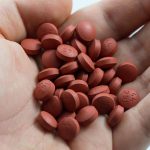 (
(